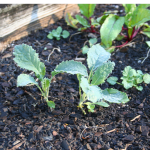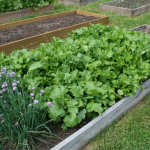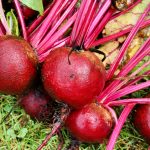You may already know that motherwort is a wonderful addition to the garden because bees and other beneficial insects love it. But did you know that there are many motherwort uses in addition to its unique beauty and affinity for pollinators? Yes, motherwort uses range from ornamental, to medicinal and even culinary.
Ready to learn more? Let’s jump right in!
Motherwort Uses
Motherwort is a nervine, so it is traditionally used to help ease stress and anxiety. It is typically made into a tincture. Common motherwort uses include easing heart palpitations, high blood pressure, anxiety, hot flashes and night sweats due to menopause, and as a sleep aid. It can also help with PMS. As a bitter herb, motherwort is also good for digestion, particularly if you have stomach issues due to nerves.
Motherwort Uses: Culinary
Yes, I said culinary. Of course, the culinary uses are few, so this will be a short section. But I was pretty fascinated when I found out that people actually cook with motherwort. I haven’t tried yet, since this is a new discovery for me, but if you feel so inspired, you’ll have to let me know the results!
Let’s start with the flowers. Usually, when motherwort is used in foods, it is the flowers that are used. You can use them fresh or dried. Typically, they are used in soups or bean dishes. Try adding a handful to your lentil or split pea soup and see what you think.
Some cooks also add chopped-up leaves along with other wild greens as a cooked side dish or in recipes that call for spinach or other greens to be added. Again, motherwort is a bitter herb, so you’ll want to balance it with other greens that are less bitter.
I think the motherwort use that was most surprising to me was the flowers being used as a flavoring in beer. I don’t brew my own beer, but I am tempted to try just to see how this tastes.
Mothewort Tea
Now, we are entering a crossover. Tea. Tea is both an enjoyable, soothing drink and at times, a medicine. So I decided to give it its own section.
Motherwort tea is most often made with dried leaves and flowers, however, you can also use fresh leaves. Whichever you choose, I recommend adding another herb like lemon balm, peppermint, so something else that you enjoy the flavor of, along with some honey or another natural sweetener. (I say this but I am known for drinking very bitter teas with no remorse. Still, normal people don’t like the bitterness so I still recommend sweetening it up a bit.)
Take a few fresh leaves or a teaspoon or two of dried motherwort and place them into a mug (or make it easy and use a tea ball). You can also make it by the quart jar by adding a cup of dried motherwort or three cups of fresh to the jar.
Heat water to just about boiling. Pour it over the herbs and cover it. This is important to prevent medicinal compounds from evaporating into the air. Let it sit, covered, for 10 to 15 minutes. Strain the herbs out and enjoy your tea. Whatever you don’t drink immediately should be refrigerated and used within 48 hours.
What About You?
What are your favorite motherwort uses? If you haven’t used it yet, what do you plan to try? Let me know in the comments.
Text by Kathleen Marshall. Photos by Jeanne Grunert.




